- Home
- James Joyce
Ulysses Page 2
Ulysses Read online
Page 2
Such relentless democratization of literature proved too much for the two great revolutionary societies of the modern world. The authorities in the United States banned the book; and Karl Radek told the Soviet Writers’ Congress in 1934: ‘Ulysses is a spider’s web of allegories and mythological reminiscences … it is a dung-heap swarming with worms, photographed by a movie-camera through a microscope.’ Radek might have been on firmer ground if he had outlawed the book on the grounds that few of its characters do a full day’s work. His response usefully summarizes a widespread bafflement at Joyce’s experimental methods, so clearly at odds with the Girl-Meets-Tractor dogmas of socialist realism propounded by 1930s Marxists. Ulysses’ reputation for obscenity was, among certain radical groups, compounded by the charge of ‘élitist’ obscurity.
The Irish responded with sarcasm and invective, but they never banned the book. Perhaps no outraged citizen felt qualified to file the necessary critique with the censorship board, which was set up only some years after publication. By then the panel may have judged it beyond the intellectual scope of corruptible readers. The former Provost of the then pro-English Trinity College, J. P. Mahaffy, seized the occasion to attack the rival University College Dublin: Ulysses proved ‘it was a mistake to establish a separate university for the aborigines of this island, for the corner-boys who spit into the Liffey’. The pro-Catholic Dublin Review spoke for nationalist Ireland in avowing that ‘the Irish literary movement is not going to find its stifling climax in a French sink’, and it paused only to lament that ‘a great Jesuit-trained intellect has gone over malignantly and mockingly to the powers of evil’. If all such readers were ashamed, of whom or what were they reminded? Once again, a great book had shown that not all people could cope with an image of their own condition. They thought that they were reading Ulysses, whereas the book had been ‘reading’ them, exposing their blind spots and their sensitive areas.
In due time, the United States rescinded its ban and the Soviet writers’ unions began to translate Ulysses into their own languages. In Dublin today, statues of Joyce abound. It was, and still is, in England that Joyce found it hardest to secure a hearing. Even before the book saw the printing presses, an official of the British Embassy in Paris burnt part of the manuscript on discovering it being typed by his wife. D. H. Lawrence complained of the ‘journalistic dirty-mindedness’ of its author, who had degraded the novel into a crude instrument for measuring twinges in the toes of unremarkable men. Arnold Bennett, though impressed by the Nighttown sequence and by Molly Bloom’s monologue, voiced a common English suspicion that anyone could have written of ‘the dailiest day possible’, given ‘sufficient time, paper, childish caprice and obstinacy’. He contended that the author had failed to extend to the public the common courtesies of literature, as a result of which one finished it ‘with the sensation of a general who has just put down an insurrection’. He thus linked it, at least sub-liminally, with the recent uprisings in Ireland. So did Virginia Woolf, who explained it as the work of a frustrated man who feels that, in order to breathe, he must break all the windows. Perhaps sensing that Joyce might have surpassed her own portrayals of quotidian consciousness, she denounced Ulysses as the work of ‘a queasy undergraduate scratching his pimples’.
In retrospect, it is clear that Leopold Bloom – intended by his creator to speak as an ordinary man outraged by the injustice of the world – had outraged the world by his very ordinariness. Even fifty years after publication, Joyce’s foremost biographer and critic, Richard Ellmann, could take up a professorship at Oxford with the still-to-be-achieved aim of bringing Ulysses to the English. Many English universities excluded the book from undergraduate courses; and those who did most to promote Joyce were often foreign scholars like Clive Hart or English writers like Anthony Burgess who found it easier to live and work overseas.
In all likelihood, the stay-at-home English had cannily sensed that Joyce, despite his castigations of Irish nationalism, was even more scathing of the ‘brutish empire’ which emerges from the book as a compendium of ‘beer, beef, business, bibles, bulldogs, battleships, buggery and bishops’. It is even more probable that, in their zeal to defend the great novelistic tradition of Austen, Dickens and Eliot, they were as baffled as many other readers by a ‘plotless’ book which had become synonymous with modern chaos and disorder.
In fact, if Ulysses has a single flaw, it is that it may sometimes seem over-plotted and that its ordering mechanisms can appear more real than the characters on whom they are imposed. Yet such mechanisms have been found essential by writers, as a way of containing the anarchic forces of modern life. It will be seen that Joyce’s highly conscious recuperation of the story of Odysseus makes possible an auto-critical method, which is itself central to the book’s critique of authoritarian systems. But, to appreciate this more fully, it is worth considering Ulysses as the triumphant solution to a technical problem which, for over a century before its publication, had exercised the modern European writer.
THE STRUCTURE
In the year 1800, the German critic Friedrich Schlegel contended that modern literature lacked a centre, ‘such as mythology was for the ancients’. The Enlightenment of the eighteenth century had taught men to contemplate the real world, stripped of all mythic explanations. ‘I must create my own system,’ said the poet William Blake, ‘or be enslaved by another man’s.’ It is notorious, however, that the painting and poems which embody that system still present ferocious difficulties to the deciphering reader. Over a hundred years later, W. B. Yeats, deprived of a Christian mythology by evolutionary science and the higher criticism, felt equally compelled to create his own system in A Vision, a book more often cited than read, and more often read than understood. The human need to make myths is very deep-rooted, since myths are symbolic projections of the cultural and moral values of a society, figurings of its psychic state. The French Revolution, which purported to put an end to all myth-making, instituted the myth of modernity, the notion of perpetual renewal which animated spirits as diverse as those of Ezra Pound (‘make it new’) and Leon Trotsky (‘permanent revolution’).
Standing on the verge of modernity in 1800, Schlegel proved himself a prophet, in the sense of one who saw so deeply into the artistic conditions of his own time that the shape of future texts became discernible. He foretold the emergence of a new mythology, which would be less a radical act of creation than a ‘collaboration’ between old and new. Ancient myths embodied people’s immediate response to their physical experience and were not seen as fictive by their adherents; but the new mythology would be abstract and aware of its own fictive status. ‘It must be the most artificial of all works of art, for it is to encompass all others,’ he declared; ‘it is to be a new course or vessel for the ancient, eternal fountainhead of poetry and itself the everlasting poem which contains within itself the seeds of all other poems.’
Schlegel’s pronouncements were an astonishingly accurate prediction of the self-critical recuperation of Homeric mythology in Ulysses. They foretold the self-destructive way in which Joyce, by making an inventory of previous literary styles, appeared to exhaust the possibilities of literature in the book to end all books. ‘Why should not what has already been emerge anew?’ asked Schlegel, ‘and why not in a finer, greater manner?’ He foresaw the pervasive strategy of modernism: the liberation of a modern sensibility by an ancient myth and the resuscitation of an ancient myth by a modern sensibility. This strategy would produce, in time, the fusion of Grail legend and modern religious doubt in Eliot’s The Waste Land, as well as the brutal juxtaposition of medieval apocalypse and aerial bombardment in Picasso’s Guernica. It issued, too, in the art of Joyce, who could not create his own system without first enslaving himself to another man’s.
From earliest childhood, Joyce had been obsessed with making lists and devising systems. At the age of seven, already away at Clongowes Wood boarding college, he wrote letters home to his parents with minute accounts of his requirements wh
ich, according to his Jesuit supervisors, read like grocer’s lists. Enchanted by designs, he evoked from his father the wisecrack that ‘if that fellow was dropped in the middle of the Sahara, he’d sit, be God, and make a map of it’. Over twenty-five years later, as he negotiated the quicksands of Ulysses, he decided that it was high time to draw such a map. The result was the famous diagram, published by Stuart Gilbert with the collaboration of the author in James Joyce’s Ulysses (1930). This charts the eighteen episodes, allocating to each its appropriate art, colour, symbol, technique and organ of the body. At the head of each chapter is a title drawn from an episode or character of Homer’s Odyssey (see p. xxiii).
For all the apparent rigour of this plan, most first-time readers of Ulysses remain only dimly aware of the Homeric analogies and do not find them greatly colouring their experience. To many of its earliest students, Gilbert’s diagram came as something of a shock. Most contended that the Homeric tale was of more value to the writer than it could ever be to the reader caught up in the immediacies of an episode. Harry Levin suggested that, as a structuring device, it had the same usefulness to the writer as scaffolding does for a builder, but that in the end the frame must fall away to reveal the true magnificence of the edifice beneath. It was for such a reason that Joyce (after some hesitation) removed the Homeric titles from his chapters, while continuing to employ them in private discussions. Having done this, however, he felt a sharp disappointment when few of the book’s first readers seemed able to elaborate the detailed analogies. So, after eight years of fruitless waiting, his patience broke and he authorized Stuart Gilbert’s book.
This may have been ill-advised. For a long time, criticism of Ulysses became little more than a detective game of literary Cluedo. Scholars went to great lengths to establish that Leopold Bloom moved along a northwesterly axis through Dublin, just as Odysseus did through the Mediterranean. None of this had been part of Stuart Gilbert’s intention. He, in 1930, had good reasons for emphasizing the deliberated symmetries of a book which, by then, had won for Joyce the dubious reputation of a heedless improviser or autistic surrealist. But Gilbert’s very success robbed later readers of a certain innocence. Thereafter, the hilarious moment in Barney Kiernan’s pub, when Bloom shakes a cigar at the chauvinist citizen, would be incomplete without the additional knowledge that this is a parody of the Homeric scene in which Odysseus launches a burning stake of olive wood and blinds the Cyclops. To elaborate further details of such a parallel is often possible and sometimes helpful – as may be seen in many books of annotations – but there is always the danger that a tracing of the Homeric structure usurps the experience of reading the text. A later critic, High Kenner, insisted that the object in reading a book is not to reconstruct the schema, just as the aim in eating a dinner is not to reconstitute the recipe. Nonetheless, many fine dinner parties have afforded guests the extra pleasure of guessing the mystery ingredients of a praised dish, and have ended with pleas for a copy of the formula to take away.
In the course of Ulysses, Joyce was frequently at pains to advertise his formula. The text abounds in ironic self-references. In the National Library scene, the Quaker librarian reports the portentous opinions of one Dr Sigerson with wide-eyed innocence: ‘Our national epic has yet to be written … Moore is the man for it.’ Good idea, wrong writer, laughs the clued-in reader. A little later in the same chapter, John Eglinton discusses Shakespeare’s cavalier alignments of times, persons and texts: ‘That was Will’s way … we should not now combine a Norse saga with an excerpt from a novel by George Meredith.’ But such a yoking of ancient saga to modern novel is precisely what Joyce effects. Again, in the library, Buck Mulligan parodies Yeats’s preface to Lady Gregory’s version of the Cúchulainn legend: ‘the most beautiful book that has come out of our country in my time’. Joyce waggishly added, ‘One thinks of Homer’ (something Yeats never actually said). There are dozens of such passages in Ulysses, at the root of which is nothing so pedantic as the love of analogy for its own sake. Rather, Joyce is anxious that the full implications of his parallel be understood in terms of his hatred of war and violence. His favourite picture of the classical hero showed a tired, exhausted Odysseus, like Bloom fatigued to the point of inarticulacy in the cabman’s shelter after midnight. Joyce liked to point out that Helen, whose beauty was a cause of the Trojan war, must have been a wrinkled and faded woman by the time it was over. His impulse was always to scale grandiose claims down to a human dimension, to domesticate the epic.
If the irony of Ulysses cuts both ways, Joyce was probably even more anxious to rebuke ancient heroism than to mock the concerns of a modern anti-hero. Odysseus may have been a reluctant warrior, but The Odyssey is nonetheless a celebration of militarism, which Joyce found suspect, whether he encountered it in ancient legend or in the exploits of the British army. Bloom’s shaken cigar is finally more dignified than risible, a reproach to the forces which can cause even a peace-loving man like Odysseus to inflict a wound. To Joyce, violence is just another form of odious pretentiousness, because nothing is really worth a bloody fight, neither land nor sea nor woman.
Which brings us to another theme, adumbrated in the second chapter by the Orangeman Mr Deasy:
– A woman brought sin into the world. For a woman who was no better than she should be, Helen, the runaway wife of Menelaus, ten years the Greeks made war on Troy. A faithless wife first brought the strangers to our shore here, McMurrough’s wife. A woman too brought Parnell low …
Some of this bad history – the reference to McMurrough’s wife is wrong – will be repeated by the nationalist citizen in the Cyclops chapter:
– A dishonoured wife … that’s what’s the cause of all our misfortunes …
– as if to prove Yeats’s description of the relentless reciprocity which bound Orange nationalist to Green, each becoming the other’s headache. Yet the reference to the Greek epic shows Joyce locating the false Helen as the first in a sequence of dubiously virtuous women, the better to dramatize his theme of ‘eternal recurrence’. As a youth, he had been obsessed with the course of the past through the present; and in Finnegans Wake he would go on to present history as cyclical repetition.
As so often in Ulysses, there is a literary-critical explanation of the theme, when Bloom glosses the word metempsychosis for his sleepy wife: ‘… they call it reincarnation. That we all lived on the earth thousands of years ago … They say we have forgotten it. Some say they remember their past lives.’ It adds to the poignancy of this exchange that Bloom is about to repeat the wanderings of Odysseus. Great past personages, from Aristotle to Parnell, from Jesus to Shakespeare, will be reincarnated in Bloom as the book unfolds. He thus conforms exactly to Victor Hugo’s definition of a mythical type, which ‘cannot be exactly superimposed upon any individual’, but ‘concentrates under one human form a whole family of characters and minds’. This gives added savour to the words with which Molly Bloom accepted her husband: ‘as well him as another’. Underlying Joyce’s depiction of Bloom is the conviction that mythic archetypes are not externally imposed by a culture but internally generated within each person. The universal wish to be original cannot conceal the reality that each is something of a copy, repeating previous lives in the inauthenticity of inverted commas (or, as the structuralists would say, perverted commas). Many early readers, including T. S. Eliot, were depressed by Joyce’s implication that beneath the superficialities of personality, most people were types rather than individuals. He, however, was merely repeating what Jung had already demonstrated, while adding the important rider that the ‘same’ could somehow manage to become the ‘new’.
To many modern minds, the notion of history as a circular repetition is a matter for despair. ‘Eternal recurrence even for the smallest!’ exclaims Nietzsche’s Zarathustra, ‘that was my disgust at all existence!’ The aimless circles in which the citizens had walked through Dubliners were symbols of a paralysis which Joyce hoped he had himself escaped. Those who believe in progress
like to depict the world as moving in a straight line towards a definable goal. At the basis of the Marxist distrust of much modernist literature is the suspicion, voiced by the Hungarian critic Georg Lukacs, that it ‘despairs of human history, abandons the idea of a linear historical development, falls back upon notions of a universal condition humaine or a rhythm of eternal recurrence, yet within its own realm is committed to ceaseless change, turmoil and recreation’. It is undeniable that autocratic minds have been attracted to the idea of history as a circle but, as he grew older, Joyce noted that such minds could equally be fixated on the linear view. The schoolmaster Deasy, in the second chapter, after all, contends that history is a straight line moving to ‘the manifestation of God’. The mature Joyce, therefore, took some comfort in the eastern wisdom of recurrence and in the mellow realization that nothing is ever completely lost. He was positively entranced by the cyclical, gyring pattern of history propounded by Yeats in A Vision, regretting only that it did not figure more prominently in the poetry.

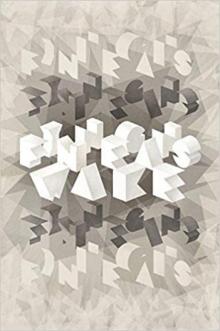 Penguin Classics the Restored Finnegans Wake
Penguin Classics the Restored Finnegans Wake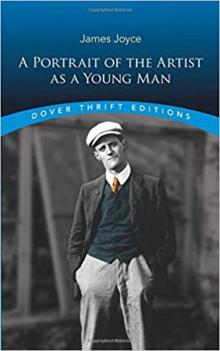 A Portrait of the Artist as a Young Man (Dover Thrift Editions)
A Portrait of the Artist as a Young Man (Dover Thrift Editions)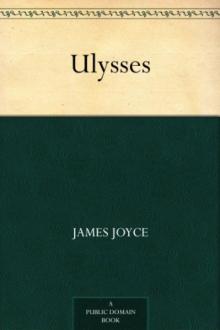 Ulysses
Ulysses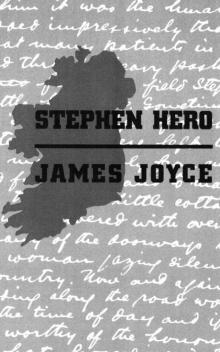 Stephen Hero
Stephen Hero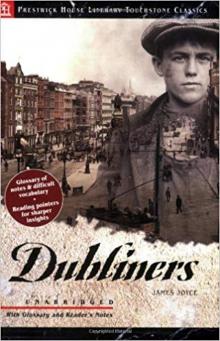 Dubliners
Dubliners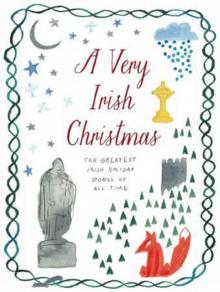 A Very Irish Christmas
A Very Irish Christmas The Complete Works of JAMES JOYCE
The Complete Works of JAMES JOYCE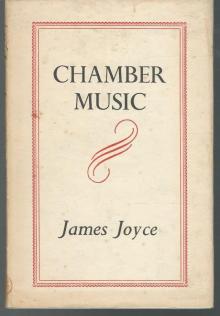 Chamber Music
Chamber Music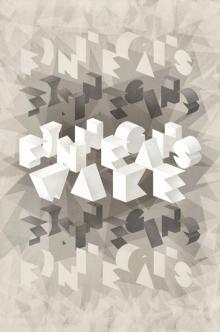 The Restored Finnegans Wake
The Restored Finnegans Wake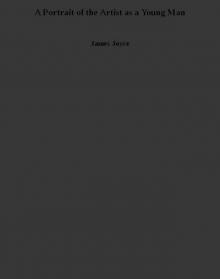 A Portrait of the Artist as a Young Man
A Portrait of the Artist as a Young Man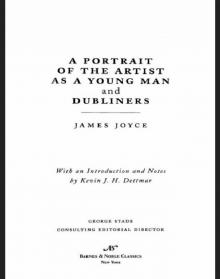 Portrait of the Artist as a Young Man and Dubliners (Barnes & Noble Classics Series)
Portrait of the Artist as a Young Man and Dubliners (Barnes & Noble Classics Series)